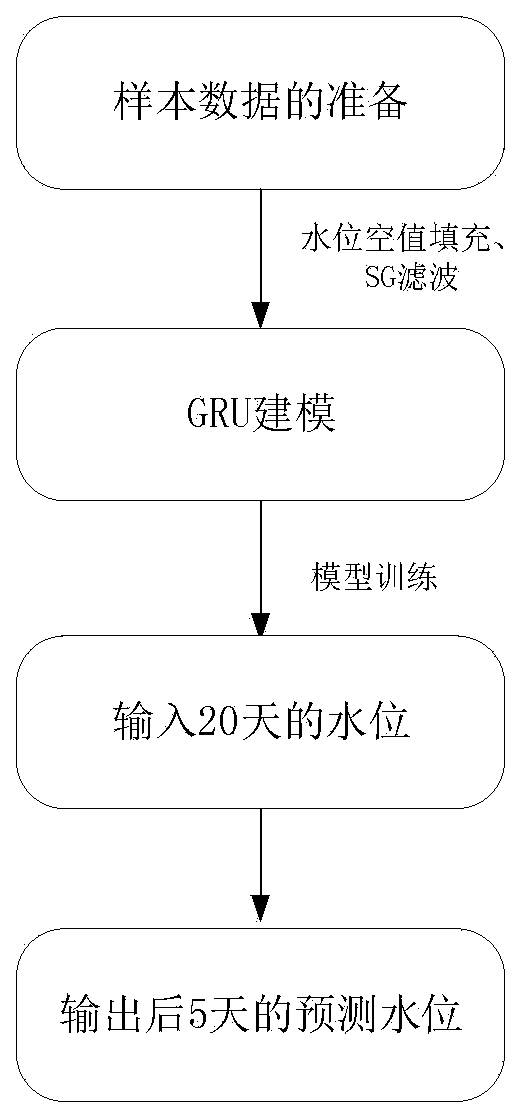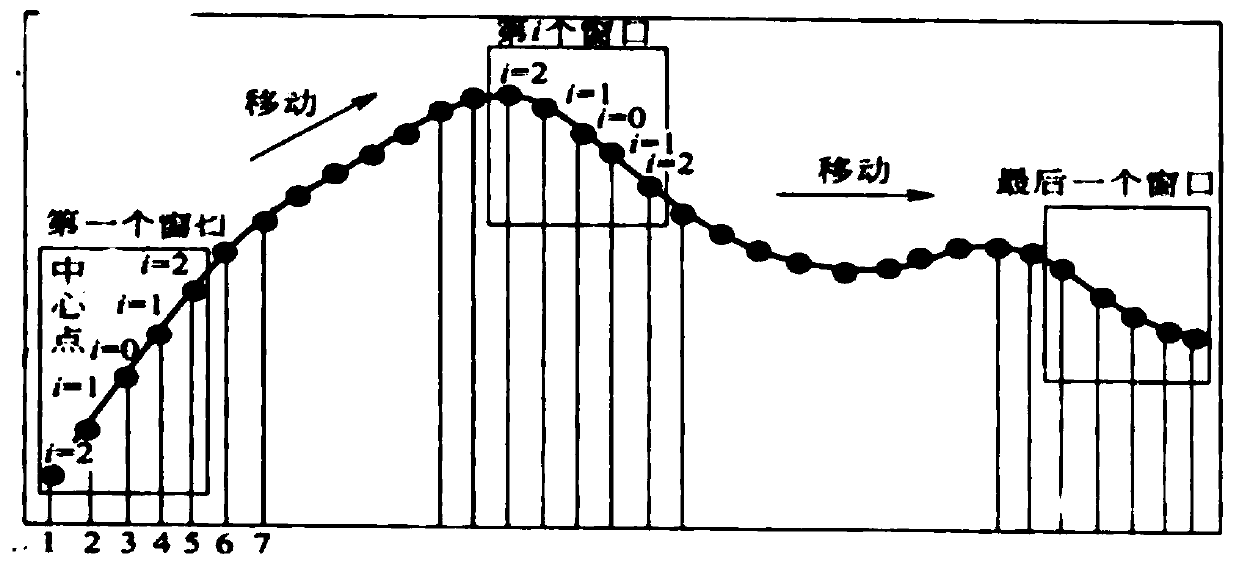Multi-water-level-station-linked inland river water level intelligent prediction method
A technology for intelligent forecasting and water level, applied in forecasting, neural learning methods, image data processing, etc.
- Summary
- Abstract
- Description
- Claims
- Application Information
AI Technical Summary
Problems solved by technology
Method used
Image
Examples
Embodiment 1
[0080] When analyzing time-series data, the quality of the data has a great influence on the analysis results. A piece of low-quality time-series data, no matter how ingenious the time-series model, is difficult to achieve the desired analysis results. In this embodiment, the sample data is preprocessed as follows.
[0081] Specifically, in step S1, the vacant value is filled using the average value. In this embodiment, the water levels of the 4 points around the vacant item are used to take the average, such as the water level x 1 ,x 2 ,x 3 ,x 4 ,x 5 , where x 3 is a blank item, the filling value is:
[0082]
[0083] In this embodiment, five-point smoothing (with a window width of 5) is taken as an example to illustrate the smoothing process. Such as figure 2 As shown, the SG filter smoothing process in step S1 includes:
[0084] Step S11: For the data points in the window, use the following formula to fit, k-1 is the number of fittings:
[0085] p(n)=a 0 +a 1...
Embodiment 2
[0092] Taking the Yangtze River as an example, the joint prediction model of three water level stations in this scheme is explained. Such as Figure 4 As shown, there are water level observation stations in Nanjing, Wuhu and Anqing along the Yangtze River, and Wuhu is located between Nanjing and Anqing.
[0093] In this embodiment, the GRU-based linkage prediction model of three water level stations is constructed, such as Figure 5 As shown, including the input layer, the first GRU layer, the second GRU layer and the output layer;
[0094] The input dimension of the input layer [(None,20,3)], where None represents the batch_size of data input to the network once (for example: set to 128), and 20 represents the step size, that is, the water level data of the past 20 days is used as input; 3 is the number of features; that is, the water level value input every day contains 3 features, that is, the 3 water level values arranged in sequence by the 3 water level stations in ...
Embodiment 3
[0108] The training of the model is divided into two parts, forward propagation and back propagation. The purpose of forward propagation is to give the output of the model, and back propagation is used to update the network weights. According to the above model structure, the focus of forward propagation and backpropagation is mainly on the GRU model, and the following assumes that the time step is 20 (such as Figure 8 Shown), the training of the GRU layer is described.
[0109] Forward propagation in step S3 such as Figure 6 As shown, it is determined by the following formula, and finally the output y is obtained t .
[0110] r t =σ(W r [h t-1 ,x t ])
[0111] z t =σ(W z [h t-1 ,x t ])
[0112]
[0113]
[0114] the y t =σ(W o h t )
[0115] Among them, [h t-1 ,x t ] means that the two vectors h t-1 ,x t Stitched together vertically, h t-1 represents the hidden information of the water level, x t Indicates the input water level data, W r ,W z ...
PUM
 Login to View More
Login to View More Abstract
Description
Claims
Application Information
 Login to View More
Login to View More - R&D
- Intellectual Property
- Life Sciences
- Materials
- Tech Scout
- Unparalleled Data Quality
- Higher Quality Content
- 60% Fewer Hallucinations
Browse by: Latest US Patents, China's latest patents, Technical Efficacy Thesaurus, Application Domain, Technology Topic, Popular Technical Reports.
© 2025 PatSnap. All rights reserved.Legal|Privacy policy|Modern Slavery Act Transparency Statement|Sitemap|About US| Contact US: help@patsnap.com



